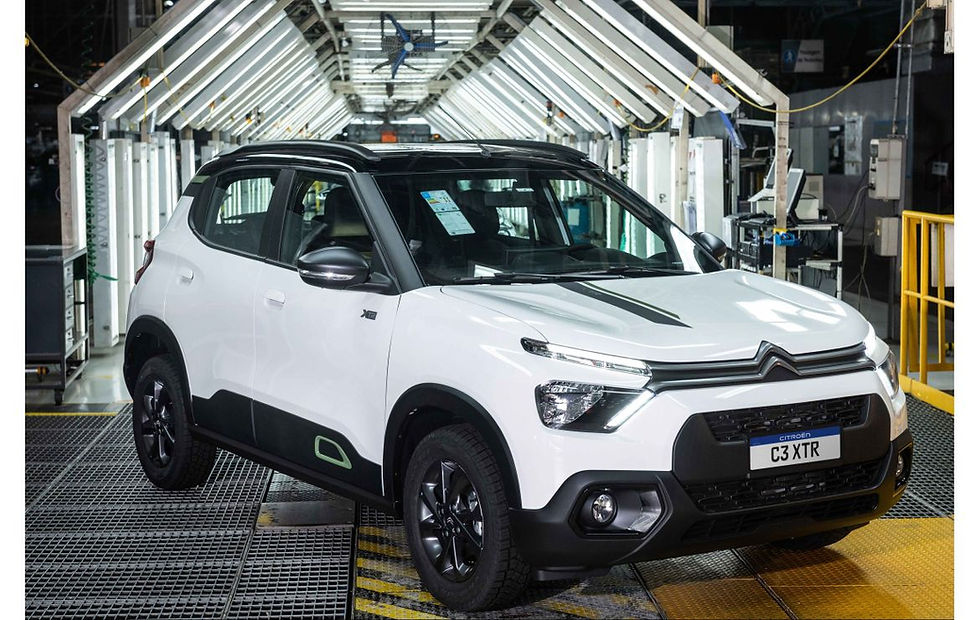Crossing the Sahara: Two Argentinians repeat the feat of the Citroën Halftrack
- Jérémy

- Dec 16, 2023
- 3 min read

In addition to an innate sense of product, of knowing how to make the right product through innovation or re-invention, André Citroën undoubtedly had a sense of communication and knew better than anyone how to get people talking about his company. It was with this aim in mind that he launched the brand's three great crossings, including the Sahara, which will celebrate its centenary in 2022. To celebrate this anniversary, three Argentinians made the crazy bet of repeating the experience, on the same route and in a Citroën 3CV, a crazy adventure of 5,600 kilometres.
It was on 17 December 1922 that André Citroën, founder of the Citroën brand, embarked on a journey that would inspire books, films and even the world's most dangerous challenge, the Dakar Rally. It was the first crossing of the Sahara by car, which took place from 17 December 1922 to 7 January 1923 with five Citroën half-tracks: Scarabée d'Or, Croissant d'Argent, Tortue Volante, Bœuf Apis and Chenille Rampante. (the last two lorries). With this expedition, André Citroën once again demonstrated the know-how and spirit of adventure that still characterise the Citroën brand today.
To celebrate these 100 years, José Izquierdo and Martín Franzosi had the idea of embarking on a new adventure in their Citroën 3CV, with which they had already undertaken so many expeditions. The story began 14 years ago, when José Izquierdo and Martín Franzosi began their journeys in the legendary Argentinean Citroën 3CV and, after adapting it to make it their "ultra-light off-road vehicle", they dared to cross salt flats, deserts, mountain ranges and various roads in Latin America. Their Citroën 3CVs have survived all the geographies and topographies to which they have been exposed. But this time they are going further, taking on a new challenge: to be the only ones in the world to retrace André Citroën's journey across the Sahara in 1922, to celebrate the 100th anniversary of this crossing.
The bet, which was officially announced in September 2022, was to cover 3,100 km across Algeria, starting from the city of Algiers, Mediterranean city and capital of the country, to distant Tamanrasset, a city in the Sahara, through the mythical Touggourt, gateway to the Algerian desert, to return via the foothills of the African Atlas, via Oran, to end the journey in the city of Algiers. In total, including the return journey, these three Argentine-built 3CVs covered some 5,600 kilometres, just as André Citroën had done at the time.
José Izquierdo, one of the two people who led this journey, commented: "Our main objective was to commemorate the 100th anniversary of the first crossing of the Sahara in a 1922 Citroën. But we were also able to travel through exotic and unknown territories, discover the rich and ancient culture and traditions of this Algerian people, so closely linked to Argentina; and at the same time commemorate the 60 years of independence of this country. All this with the desire to share all our culture with our beloved 3CV". Martin Franzosi, José's partner on this trip, also said: "It was a life experience that some of us are ready to live. This is that if you have very clear objectives and think about them, you will be able to overcome them. The challenge of success is to achieve a balance between man and machine. This is why we decided to join forces with three Argentinian 3CVs. This Citroën model has been an icon of the accessible, agile and elegant car in Argentina for many generations and has shown us over the last 14 years that we can trust it".

To conclude, fortunately there are enthusiasts who continue these crazy expeditions and continue the tradition of Citroën adventures. We can only regret the abandonment of the ë-Popée, which was to celebrate the centenary of the Sahara crossing in an electric vehicle, but this allowed these Argentinean Citroënists to make their journey, their adventure at the wheel of the Argentinean 3CV, which was obviously very resilient and completed the 5,600 km of the event without any major difficulties.






Comments